
How to Use ESP 32 DEVKIT V1 (30 pins): Examples, Pinouts, and Specs
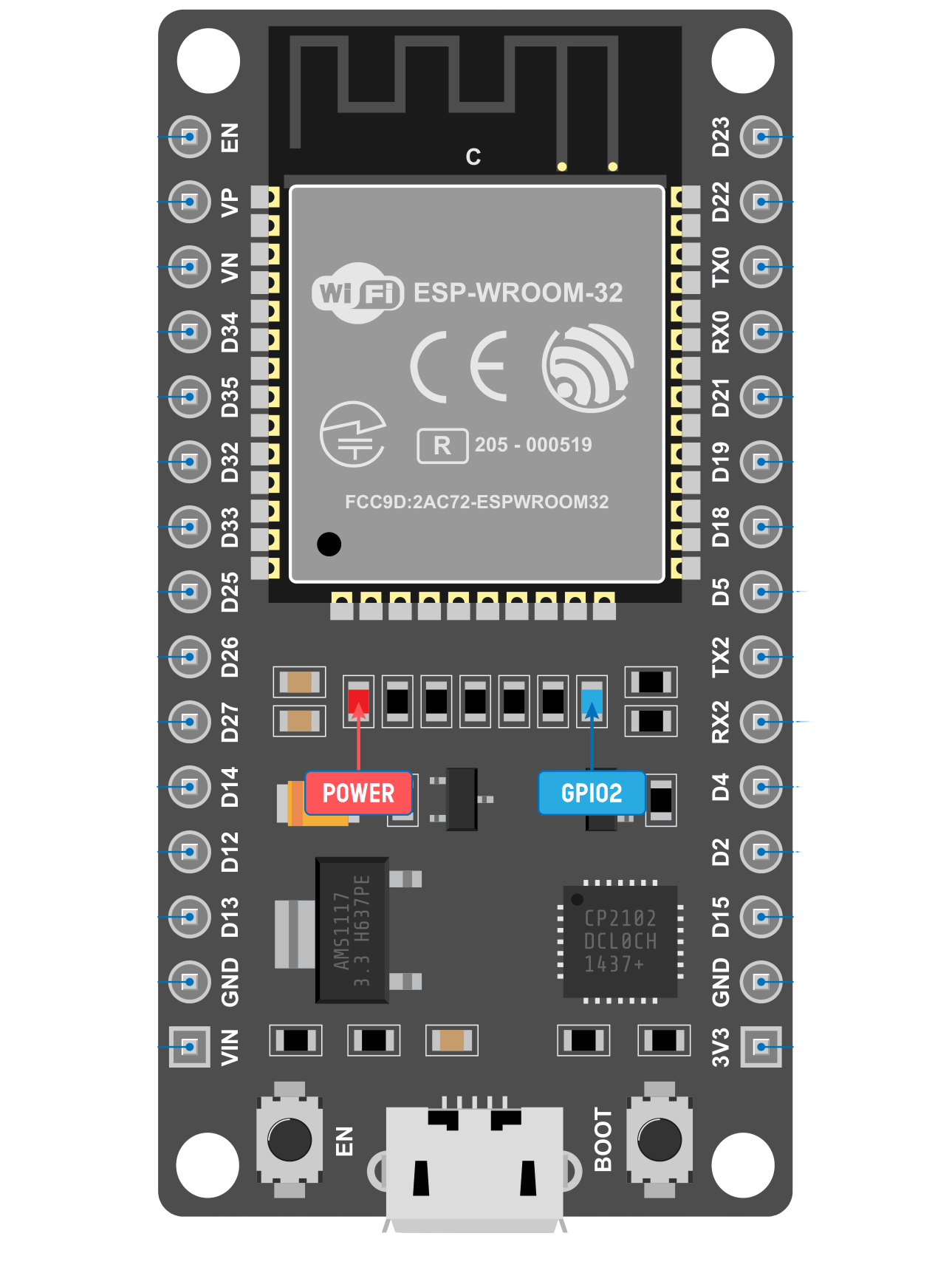
 Design with ESP 32 DEVKIT V1 (30 pins) in Cirkit Designer
Design with ESP 32 DEVKIT V1 (30 pins) in Cirkit DesignerIntroduction
The ESP32 DEVKIT V1 is a versatile development board that harnesses the power of the ESP32 microcontroller. This chip comes with integrated Wi-Fi and Bluetooth capabilities, making it an ideal choice for Internet of Things (IoT) projects. The board's 30 GPIO pins offer a wide range of functionality, from digital and analog I/O to touch sensors, SPI, I2C, and UART communication.
Explore Projects Built with ESP 32 DEVKIT V1 (30 pins)
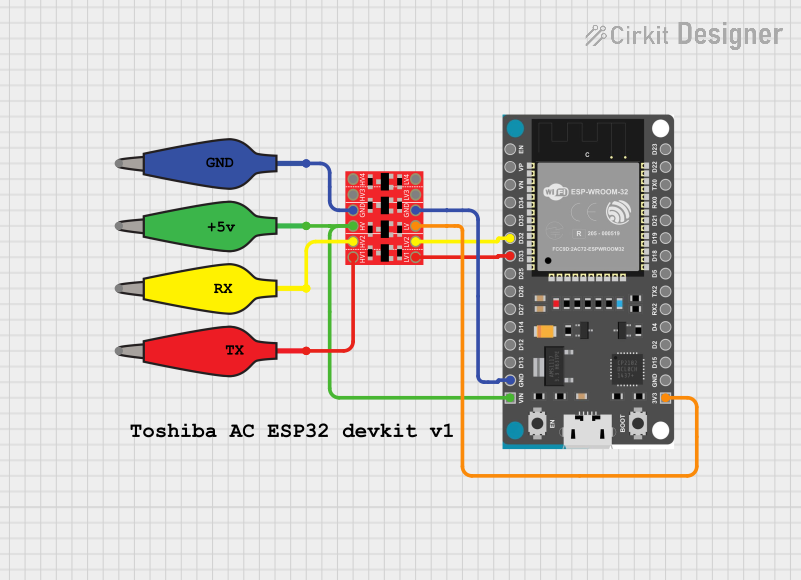
 Open Project in Cirkit Designer
Open Project in Cirkit Designer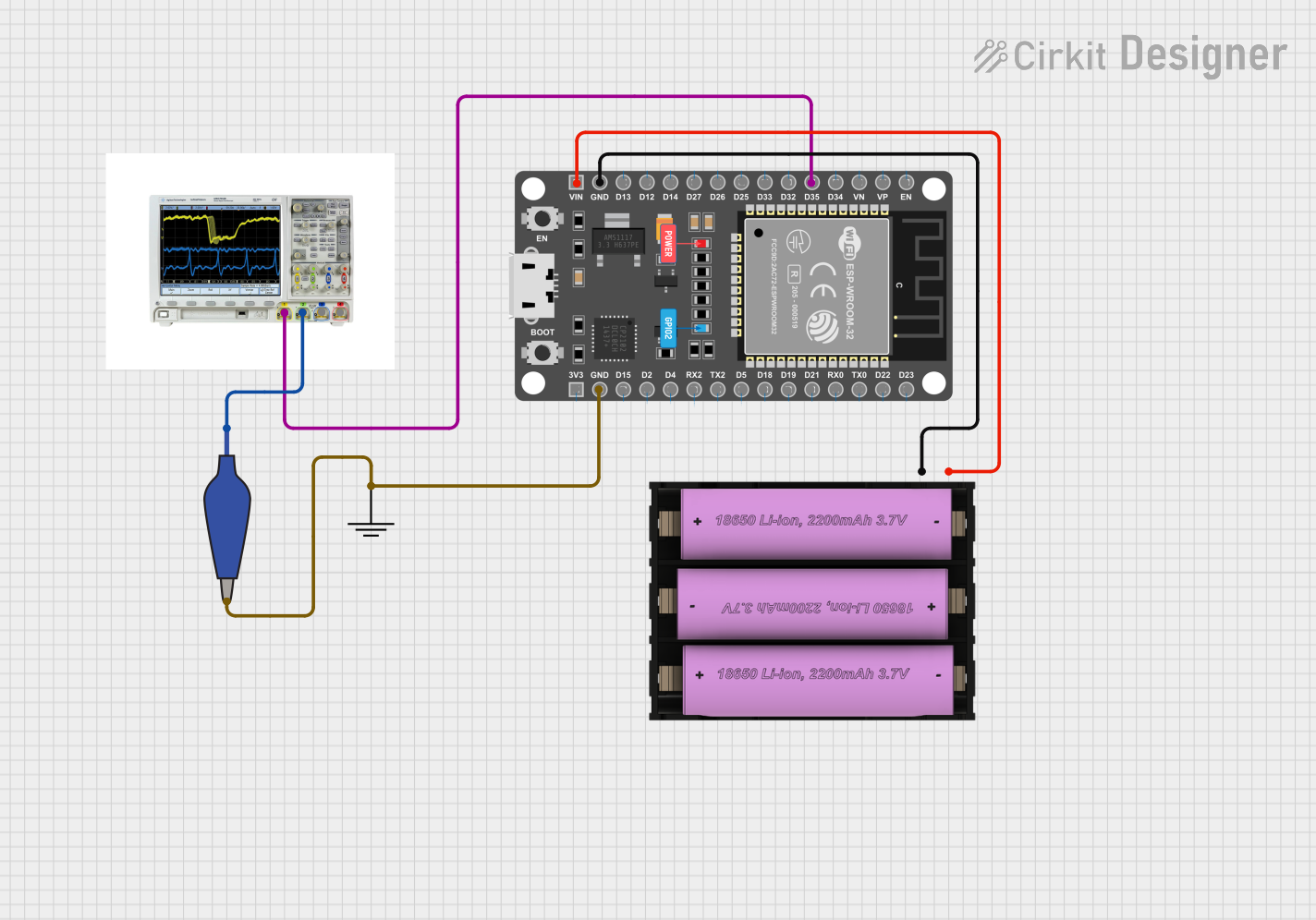
 Open Project in Cirkit Designer
Open Project in Cirkit Designer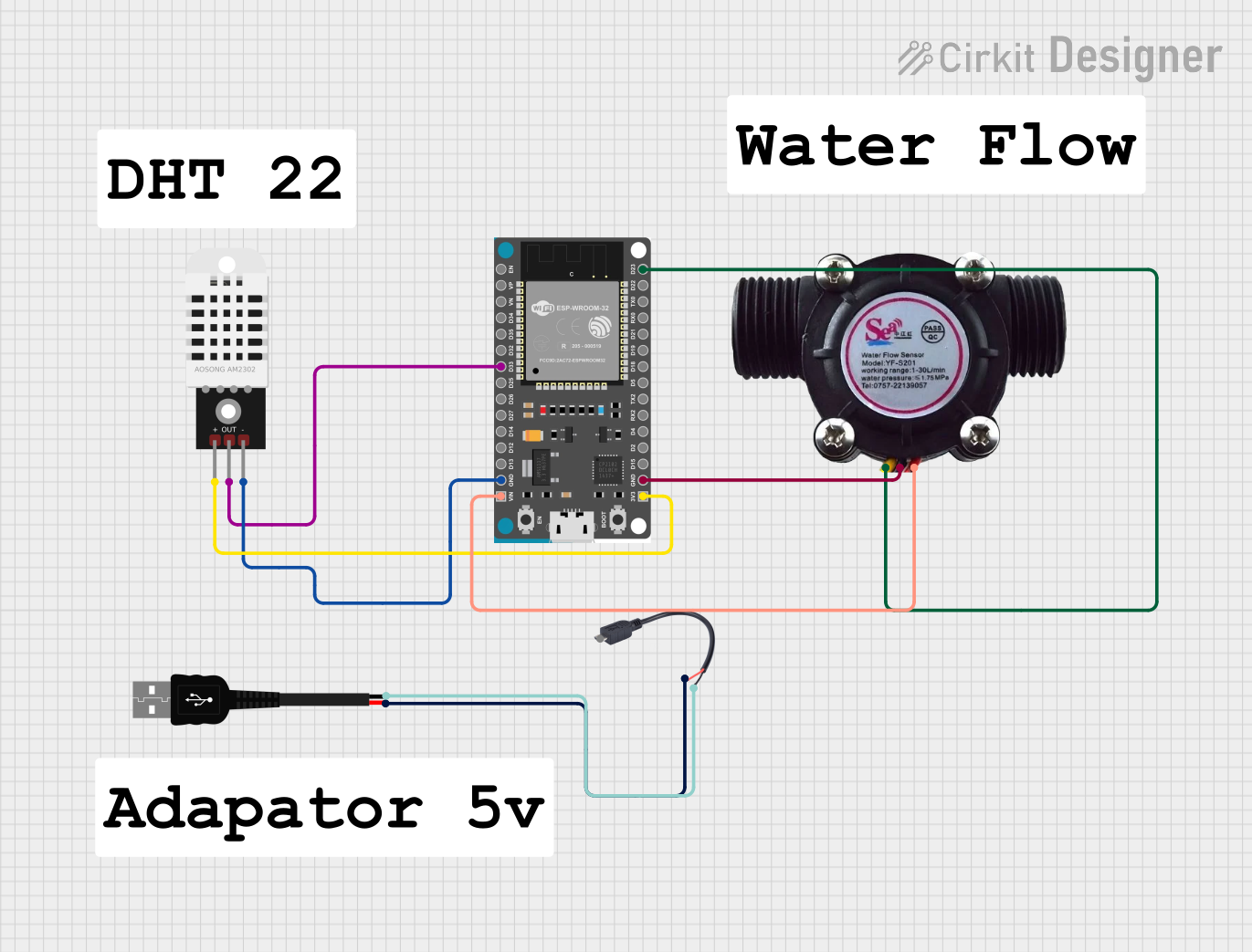
 Open Project in Cirkit Designer
Open Project in Cirkit Designer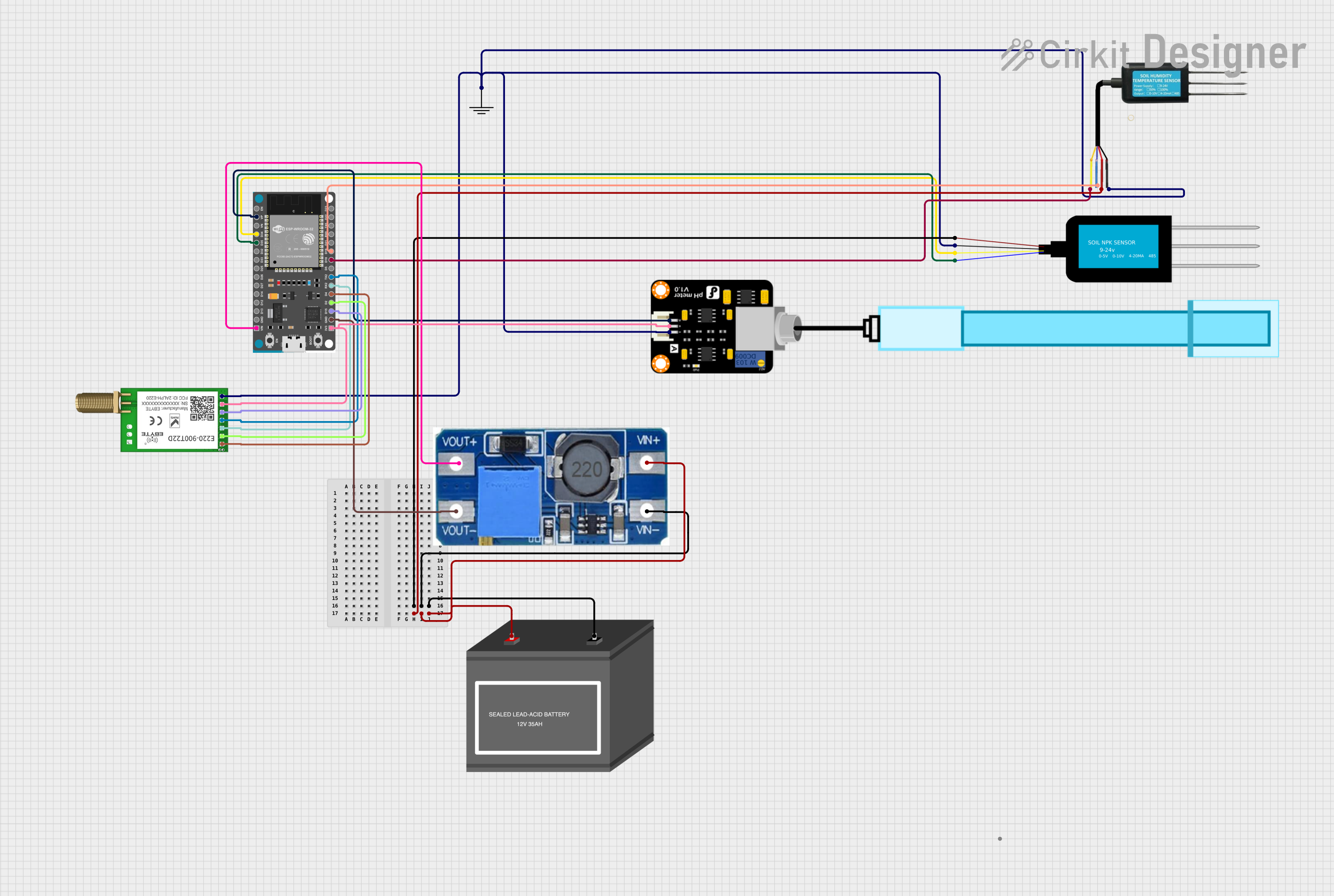
 Open Project in Cirkit Designer
Open Project in Cirkit DesignerExplore Projects Built with ESP 32 DEVKIT V1 (30 pins)

 Open Project in Cirkit Designer
Open Project in Cirkit Designer
 Open Project in Cirkit Designer
Open Project in Cirkit Designer
 Open Project in Cirkit Designer
Open Project in Cirkit Designer
 Open Project in Cirkit Designer
Open Project in Cirkit DesignerCommon Applications and Use Cases
- Smart home devices
- Wireless sensors
- IoT networking
- Bluetooth-based applications
- Low-power device prototypes
Technical Specifications
Key Technical Details
- Microcontroller: ESP32
- Operating Voltage: 3.3V
- Input Voltage: 7-12V
- Digital I/O Pins: 30
- Analog Input Pins: 6 (VP, VN, 32, 33, 34, 35)
- Flash Memory: 4MB
- SRAM: 520 KB
- Clock Speed: 240MHz
- Wi-Fi: 802.11 b/g/n
- Bluetooth: v4.2 BR/EDR and BLE
Pin Configuration and Descriptions
| Pin Number | Function | Description |
|---|---|---|
| 1-2 | GND | Ground |
| 3 | 3V3 | 3.3V power supply |
| 4-5 | EN | Chip enable. Active high. |
| 6-7 | VP | 36, SENSOR_VP, ADC_H, RTC_GPIO0 |
| 8-9 | VN | 39, SENSOR_VN, ADC_H, RTC_GPIO3 |
| 10-11 | IO34 | 34, ADC1_CH6, RTC_GPIO4 |
| 12-13 | IO35 | 35, ADC1_CH7, RTC_GPIO5 |
| 14-15 | IO32 | 32, XTAL_32K_P (32.768 kHz crystal oscillator positive input) |
| 16-17 | IO33 | 33, XTAL_32K_N (32.768 kHz crystal oscillator negative input) |
| 18-19 | IO25 | 25, DAC_1, ADC2_CH8, RTC_GPIO6 |
| 20-21 | IO26 | 26, DAC_2, ADC2_CH9, RTC_GPIO7 |
| 22-23 | IO27 | 27, ADC2_CH7, TOUCH7, RTC_GPIO17 |
| 24-25 | IO14 | 14, ADC2_CH6, TOUCH6, RTC_GPIO16 |
| 26-27 | IO12 | 12, ADC2_CH5, TOUCH5, RTC_GPIO15 |
| 28-29 | IO13 | 13, ADC2_CH4, TOUCH4, RTC_GPIO14 |
| 30 | IO9 | 9, SD2, SPIHD, HSPIHD |
Note: This table is not exhaustive and only includes a selection of pins for brevity.
Usage Instructions
How to Use the Component in a Circuit
Powering the Board:
- Connect a 7-12V power supply to the VIN pin and GND, or use the micro USB port for power.
Connecting to Wi-Fi:
- Utilize the onboard Wi-Fi capabilities to connect to a network for IoT applications.
Interfacing with Sensors:
- Connect analog sensors to the ADC pins or digital sensors to the GPIO pins.
Programming the Board:
- Use the Arduino IDE or other development environments to write and upload code to the ESP32.
Important Considerations and Best Practices
- Always ensure that the power supply is within the recommended voltage range to prevent damage.
- When using Wi-Fi or Bluetooth, consider the power consumption and plan for power management in battery-operated projects.
- Use proper decoupling capacitors close to the power pins to stabilize the power supply.
- Avoid using pins 6-11 for GPIO as they are connected to the integrated SPI flash and using them may interfere with the operation of the flash memory.
Troubleshooting and FAQs
Common Issues
- Board not recognized by the computer:
- Ensure the micro USB cable is data-capable and the board drivers are installed.
- Wi-Fi or Bluetooth not functioning:
- Check the antenna connections and ensure the correct configuration in the code.
Solutions and Tips for Troubleshooting
- If the board does not power on, check the power supply and cable connections.
- For connectivity issues, verify the network credentials and signal strength.
- Use the onboard LED as a simple debugging tool to indicate the status of the board.
FAQs
Q: Can I use the ESP32 DEVKIT V1 with a battery?
- A: Yes, but ensure the battery voltage is within the recommended input range.
Q: How do I program the ESP32 DEVKIT V1?
- A: You can program it using the Arduino IDE or other compatible development environments.
Q: What is the maximum current that the GPIO pins can handle?
- A: Each GPIO pin can typically source or sink up to 12 mA.
Example Code for Arduino UNO
#include <WiFi.h>
// Replace with your network credentials
const char* ssid = "your_SSID";
const char* password = "your_PASSWORD";
void setup() {
Serial.begin(115200);
// Connect to Wi-Fi
WiFi.begin(ssid, password);
while (WiFi.status() != WL_CONNECTED) {
delay(1000);
Serial.println("Connecting to WiFi...");
}
Serial.println("Connected to WiFi");
}
void loop() {
// Your code here
}
Note: This example demonstrates how to connect the ESP32 to a Wi-Fi network. Replace your_SSID and your_PASSWORD with your actual Wi-Fi credentials.
Remember to consult the ESP32 datasheet and technical reference manual for more detailed information on the microcontroller's capabilities and the development board's design.